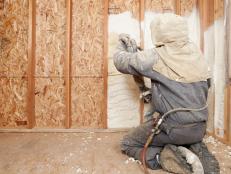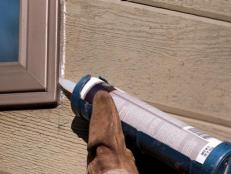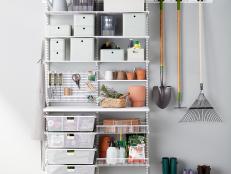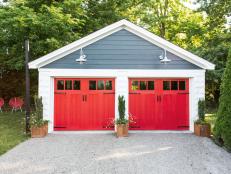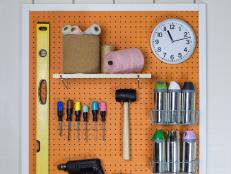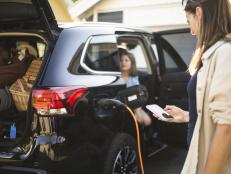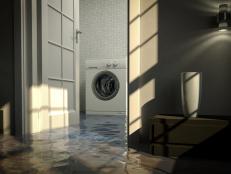Air Sealing the Home Garage
An attached garage is a nice place to park your car and store your stuff, but it can also create a health hazard for everyone living in the house. The simple act of starting your car in the morning produces harmful carbon monoxide; and storing chemicals, fertilizers and paints can generate harmful fumes. These gases and fumes can enter into the house and make people sick.
Traditionally garages weren't air-sealed for exhaust fumes. The small penetrations in the walls between the garage and the living spaces could add up and, over time, lead to lots of harmful fumes drifting into the home. The door between the garage and the living space was usually made of wood and lacked weather stripping or a self-closing device to block the exhaust fumes.
The problem with using a wooden door is that it can catch fire. And without a self-closing device, the door could be accidentally left wide open for an extended period of time, leaving the house vulnerable to the many harmful fumes and gases of the garage.
So how do you keep these fumes from entering the house?
The best practice is to create an air seal between the house and the garage, preventing harmful fumes from getting into the living spaces. Keeping these fumes out begins early in the construction process and is only slightly different from current practices.
- The first step may seem simple, but it's an important one. Identify the walls of the garage that need sealing. These areas are rooms above the garage, or rooms adjacent to it. If they are attached to the garage, it's a good target for air-sealing.
- Next, insulate these walls the same way the exterior walls of the house are insulated.
- On the garage side of the wall, use a 5/8" type X (fire-rated) gypsum board. Later, when you're finishing the interior portion of these walls, you'll want to use a standard gypsum board.
- Next, identify any penetrations in the walls. Essentially, you're looking for anything (e.g., switches, plugs, light fixtures, etc.) that pokes a hole in the gypsum board on either side of the wall.
- Use a fire-rated caulk, adhesive, or expanding foam to seal up these penetrations. For example, use the caulk to fill the space between the electric box of a switch and the drywall that is cut around it.
- The door between the living space and the garage is also a key component to the air-sealing strategy, so we want to select an insulated, metal, fire-rated door with a good weather seal. The door should also have a self-closing device on it. Install the door according to the manufacturer's instructions.
When it comes to the safety of the homeowner, taking the extra step to properly air-seal the garage and install a self-closing, fire resistant door is definitely the best practice.






